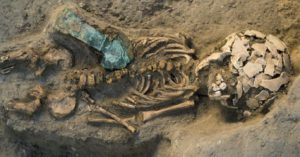In the introduction, Dr. Zuk sets the tone and scene of the book for her readers. She opens with answering the all common question: why do we care about old fossils and ponder about life 100s of thousands of years ago? Well, the samples of ancient DNA are revolutionizing our preconceived ideas of the speed of human evolution and showing us that we are not shackled by our ancient bodies.
The author introduces her book’s namesake: Paleofantasy. Coined by anthropologist Leslie Aiello, “paleofantasies” are based on the idea that “our human lives are out of touch with the way human beings evolved”, and that ultimately it would be healthier and more natural for us to live more like our ancestors. From the get-go Dr. Zuk makes it clear that she is hesitant about a strict adherence to paleofantasy. She claims that to think of ourselves as misfits in modern times contradicts what scientists are now understanding about the way evolution works. Evolution can be fast, slow, or in-between and works on a good enough but rarely perfect basis. Paleofantasy assumes that we were in perfect harmony with our environments at some point, but neither humans or any other species has ever been perfectly adapted to our environments. Evolution is constantly at work, whether it is visible or not.
Dr. Zuk emphasizes the importance of understanding that modern humans are not “operating in a completely new environment” just because we live to an older age now compared to the average hunter-gatherer that only lived until 30 or 40. An average of 30 or 40 was due to a high child mortality rate, but people that survived past childhood had a high chance of living past their 40s and experience age-related diseases. In her own words, “old age is not a recent invention, but its commonness is.”
The aim of Paleofantasy is to recognize the evolutionary heritage of our modern bodies while also recognizing the the new developments in evolutionary biology. The author welcomes us to explore the chapters which will show what we know about human-environment harmony, speed of evolution, and what these findings imply about the future of human evolution.

